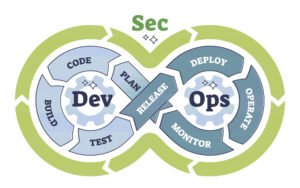In the rapidly evolving landscape of information technology, cybersecurity has become a central concern for organizations across the globe. With the rise of digital transformations, the traditional approach to software development and IT operations has shifted towards more integrated and agile practices. This has led to the emergence of Development, Security, and Operations (DevSecOps), a new paradigm that infuses security into every phase of the development lifecycle. For IT consultants, understanding and implementing DevSecOps is no longer optional but a necessity to ensure the resilience and security of their clients’ systems.
Understanding DevSecOps
DevSecOps is an extension of the DevOps philosophy, which emphasizes collaboration between software developers and IT operations teams to automate and streamline the software delivery process. DevSecOps expands on this by incorporating security practices into the DevOps cycle, ensuring that security is not an afterthought but a fundamental component of the entire process.
The goal of DevSecOps is to bridge the gap between rapid deployment and secure deployment. By integrating security early in the development process, organizations can detect vulnerabilities sooner, reduce the risk of security incidents, and comply with regulatory requirements more efficiently.
The Role of IT Consultants in DevSecOps
IT consultants play a crucial role in helping organizations transition to a DevSecOps model. They provide expertise in both the technical and cultural changes required to adopt this new approach. Here’s how IT consultants can facilitate the integration of cybersecurity with DevSecOps:
Assessing the Current State
Before implementing DevSecOps, IT consultants must assess the current state of an organization’s development, security, and operations practices. This involves evaluating existing workflows, tools, and security measures to identify areas for improvement.
Developing a Strategy
Once the assessment is complete, consultants can develop a tailored DevSecOps strategy that aligns with the organization’s objectives and risk profile. This strategy should outline the steps necessary to integrate security into the development lifecycle, including the selection of appropriate tools and technologies.
Implementing Automation and Tools
Automation is at the heart of DevSecOps. IT consultants should help organizations select and implement automation tools that facilitate continuous integration and continuous delivery (CI/CD), as well as automated security testing and monitoring. These tools enable teams to identify and address security issues in real-time, without slowing down the development process.
Training and Cultural Change
Adopting DevSecOps requires a shift in mindset and culture within the organization. IT consultants must provide training to both developers and operations teams on the importance of security and how to incorporate security practices into their daily work. Promoting a culture of collaboration and shared responsibility for security is essential.
Continuous Improvement
DevSecOps is not a one-time project but an ongoing journey. IT consultants should establish metrics and feedback loops to measure the effectiveness of the DevSecOps practices and identify areas for continuous improvement. Regularly reviewing and updating security policies and procedures ensures that the organization stays ahead of emerging threats.
Benefits of Integrating Cybersecurity with DevSecOps
The integration of cybersecurity with DevSecOps offers several benefits to organizations:
- Improved Security Posture: By embedding security into the development process, organizations can proactively address security risks before they become critical issues.
- Faster Time to Market: Automation and early security integration allow for quicker release cycles without compromising security.
- Cost Savings: Identifying and fixing security issues early in the development process is generally less expensive than addressing them after deployment.
- Regulatory Compliance: DevSecOps practices can help organizations meet compliance requirements more effectively by integrating compliance checks into the CI/CD pipeline.
- Enhanced Collaboration: A DevSecOps culture encourages collaboration between development, security, and operations teams, leading to better communication and more efficient workflows.
Conclusion
The integration of cybersecurity with DevSecOps represents a significant shift in how organizations approach software development and IT operations. For IT consultants, guiding clients through this transition is critical to building secure and resilient systems capable of withstanding the sophisticated cyber threats of today and tomorrow. By embracing the principles of DevSecOps, consultants can provide immense value, helping organizations innovate rapidly while maintaining a strong security posture. As the digital landscape continues to evolve, the adoption of DevSecOps will not just be a trend but a fundamental requirement for success in the field of IT consultancy.

